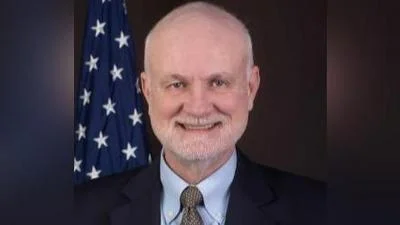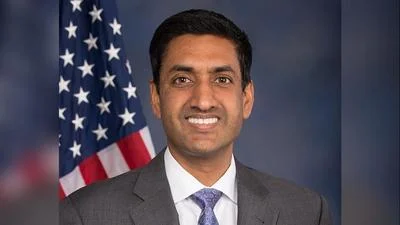John Taylor, Professor of Economics at Stanford University and developer of the "Taylor Rule" for setting interest rates | Stanford University
John Taylor, Professor of Economics at Stanford University and developer of the "Taylor Rule" for setting interest rates | Stanford University
In 1908, Stanford sophomore and pole vaulter Sam Bellah competed in the Summer Olympics in London. Although he placed sixth, his appearance made him the university’s first student-athlete to compete at the Games.
Since then, 177 Stanford-affiliated athletes have captured 296 medals, including 150 gold, 79 silver, and 67 bronze. These accolades join a host of other athletic accomplishments that have placed Stanford among the most competitive universities in collegiate sports, including at the Olympics.
Professor Jeff Koseff, who served as Stanford’s faculty athletics representative to the Pac-12 conference and NCAA, said that many factors contribute to the university’s athletic success, including Stanford’s student-athlete model.
“Athletic excellence coupled with academic excellence is part and parcel of our DNA,” said Koseff, who is the director of the Change Leadership for Sustainability Program and the William Alden Campbell and Martha Campbell Professor in the School of Engineering.
Since Bellah became Stanford’s first Olympian, many others have followed. George Horine, who graduated in 1914, was the first Stanford athlete to receive a medal. A track and field athlete, he won bronze in high jump at the 1912 Stockholm Games.
Before enrolling at Stanford, Marjorie Gestring competed in the 1936 Berlin Olympics where she won springboard title. She was just 13 years and 267 days old making her youngest person ever to win an Olympic gold medal.
The 2016 Games in Rio de Janeiro were most successful for Stanford athletes who took home 27 medals including 14 gold seven silver six bronze medals. Star swimmer Katie Ledecky ’20 won impressive four gold medals a silver.
Stanford’s total medal count is led by former Cardinal swimmer Jenny Thompson ’95 who competed four Olympics between 1992-2004. Her twelve medals include eight gold three silver one bronze. Among Stanford-affiliated Olympians she is followed by fellow swimmers Ledecky who holds ten medals John Hencken with six Janet Evans Simone Manuel Pablo Morales each five medals.
In addition to Stanford’s student-athlete model Koseff credits Olympic success commitment training range athletes while other schools may focus classic American collegiate sports like football basketball Stanford has remained supporter Olympic sports.
He also credits Pac-12 preparing athletes compete Games noted four universities whose athletes lead Olympic medal counts (University Southern California University California Los Angeles University California Berkeley) all members conference.
“Student-athletes came into Pac-12 faced unbelievable amount competition Olympic sports allowing them sharpen skills perform top game if they succeeded there going succeed Olympics” Koseff said “Pac-12 nursery Olympic achievement should not underestimated forgotten.”
Finally Koseff said that Stanford’s coaches many whom coached Olympic teams are among best college sports “They great teachers excellent recruiters attract very best student-athletes come Stanford” he said “That investment excellent coaching paid off incredibly.”
David Kiefer writer for Stanford Athletics said that coaches huge draw Olympic hopefuls “Athletes want get next level compete world stage know if come here train best good chance making team.”
Stanford students brothers Peter Dick Dreissigacker never competed Olympics but invented now-ubiquitous carbon-fiber oar ergometer rowing machine indoor training
Stanford affiliates contributed number innovations changed how played enrolled Hank Luisetti revolutionized basketball introducing one-handed shot Ernst Brandsten coached thirty-one years considered father diving United States invented Brandsten diving board distinguished itself tapered springboard movable fulcrum Former indoor volleyball player Erik Shoji pioneered sport libero position running dynamic multi-option offense quick tempo helped keep offense rhythm Shoji brother Kawika won multiple medals
For decades some world talented coaches come Farm train athletes Kiefer said found early success particularly track swimming
“Stanford had two best those sports” he said “Dink Templeton coached track team Ernst Brandsten swimming diving both helped produce lot dominant time”
Harry Maloney prolific career between nineteen-oh-eight nineteen-forty-four coached U.S men rugby team gold twenty-four Paris included nine players
During decades-long career legendary coach Brooks Johnson served Team USA coaching staff several including head women nineteen-eighty-four relay two-thousand-eight Johnson died June twenty-nine age ninety noted influence testament importance quality coaching
Thomas Glielmi men gymnastics head since two-thousand-two served staffs multiple teams Team USA head coach twenty-twenty Tokyo seen firsthand what takes succeed
“First foremost academically viable” referring model Those hope must demonstrate stellar athleticism strength tenacity drive discipline natural ability succeed importantly desire improve “Olympic hopefuls need willing put pressure push go next level because compete best world not just conference country”
Because stakes higher manage pressure stress Glielmi seen so focused winning reaching goal effort backfires falter
“In moments step back gain perspective tell enjoy process”
Although competitive founding Koseff ascension whether winning national championships Directors’ Cups etc did not fully take off until Title IX implemented seventies “That changed lot began investing heavily building particularly women”
Kiefer agreed noting around time like football coach John Ralston encouraged admissions office cast wider net reach more showed great potential including sports “One first understand admissions important factor encouraged admitting more different backgrounds”
Glielmi noted nineties alumni rallied around programs fundraising led better facilities attracted better turn promising He also credits campus culture helping inspire students
“Everyone something excited about startup research contagious huge benefit keeps motivated adding faculty staff supportive ambitions This encouraging environment separates itself”
___




 Alerts Sign-up
Alerts Sign-up